22 Hearty Styrian Foods to Taste on Your Alpine Journey
Styrian cuisine represents a delightful culinary landscape steeped in regional traditions and hearty flavors.
Austria's southern province boasts a remarkable gastronomic heritage that reflects its agricultural roots and cultural diversity.
Local ingredients play a pivotal role in crafting memorable dishes that tantalize taste buds and connect generations.
Family recipes passed down through decades showcase remarkable creativity and deep respect for culinary craftsmanship.
Regional specialties celebrate seasonal produce, transforming simple components into extraordinary meals that reflect local landscapes and farming practices.
The cuisine blends Alpine and Mediterranean influences, creating unique flavor profiles that surprise and delight food enthusiasts.
You can sense the passion and dedication embedded in every carefully prepared traditional recipe.
Prepare to uncover 22 mouthwatering traditional Styrian foods that will transport you directly to this charming Austrian region:
Styrian Foods Rooted in Austrian Tradition
Austria’s Styrian region is celebrated for its rustic, farm-fresh fare. Crisp salads, hearty stews, and famous pumpkin seed oil define the local table.
Obara
Obara emerges as a rustic Slovenian stew bursting with rich meaty flavors and seasonal vegetables that originally graced special occasions like weddings and Sundays.
Slovenian families crafted this hearty dish using a medley of meat cuts, offal, and garden-fresh ingredients including onions, carrots, celery, peas, beans, and turnips.
Traditionally prepared in large pots, the stew simmers slowly to develop deep, complex tastes that reflect rural culinary traditions.
Unique regional variations like polsja obara even incorporate unusual proteins such as dormouse, showcasing the recipe's adaptability.
Accompanying ajdovi zganci adds texture and substance to the meal.
Modern kitchens now enjoy obara throughout the year, breaking its past ceremonial limitations.
Meat selection ranges from pork and beef to game, ensuring each pot tells a different flavor story.
Regional ingredients and cooking techniques continue to shape this beloved Slovenian comfort food.
Zgornjesavinjski Zelodec
Zgornjesavinjski zelodec stands as Slovenia's most prestigious pork delicacy, meticulously crafted in the Upper Savinja Valley using traditional techniques that transform pig stomach into a culinary masterpiece.
Translating to 'pig stomach', this specialized cured meat requires precisely 5 to 6 kilos of premium pork and bacon with an exact 80:20 meat-to-fat ratio.
Skilled artisans finely chop the meat and season it carefully with salt, pepper, and garlic before carefully stuffing the animal casings.
Craftsmen strain and press the meat-filled casings, then dry cure the product for 3 to 6 months, developing its distinctive flat shape.
Regional production methods ensure exceptional quality and authenticity.
Careful selection of high-quality pork guarantees rich flavor and consistent texture.
Generations of Slovenian butchers have perfected this unique preservation technique.
Strict geographic limitations protect its prestigious regional status.
Prazene Gobe Z Jajci
Slovenian mushroom magic bursts from Stajerska's forest-rich landscapes, transforming wild-foraged fungi into a sizzling skillet sensation that blends earthy mushrooms with creamy eggs and bright parsley.
Foragers traditionally hunt these woodland treasures, carefully selecting perfect specimens for this rustic dish.
Thin-sliced mushrooms dance with caramelized onions in a hot pan, releasing rich, deep flavors.
Minced garlic and fresh parsley add aromatic complexity to the mixture.
Whisked eggs pour into the skillet, creating a golden, silky texture that binds ingredients together.
Salt and pepper season the dish, enhancing each ingredient's natural essence.
Regional cooks often serve this hearty meal as a satisfying appetizer or standalone lunch.
Mountain villagers have perfected this simple yet extraordinary recipe over generations, celebrating Slovenia's abundant natural bounty.
Pohorska Gibanica
Slovenian gibanica stands out as a multilayered pastry masterpiece bursting with regional variations and seasonal ingredients.
Pohorje's version highlights a yeast dough foundation packed with homemade cottage cheese and unique fillings like dried pears, apples, forest fruits, or tarragon.
Bakers craft each slice with meticulous attention to texture and flavor combinations.
Powdered sugar dusts the top after cooling, creating a delicate finish.
Regional differences emerge across Slovenia's landscape, ensuring every slice tells a distinctive story.
Semi-sweet wines complement the cake's rich profile perfectly.
Locals treasure this dessert as a celebration of traditional baking techniques.
Seasonal adaptations keep gibanica exciting and relevant throughout the year.
Prleska Gibanica
Prleska gibanica stands out as a delightful layered pastry from Slovenia's Prlekija region, featuring a complex texture of thin, crispy dough sheets alternating with creamy cheese fillings.
Slovenian bakers craft this traditional cake by rolling delicate dough into gossamer-thin layers, expertly stacking them with a rich mixture of curd cheese, eggs, and sour cream.
Butter, oil, flour, sugar, vinegar, salt, and warm water combine to create its distinctive base and flaky structure.
Skilled hands carefully assemble each layer, ensuring a perfect balance of crisp pastry and smooth, tangy filling.
Sunflower oil brushed on the final dough layer adds a golden sheen during baking.
Finishing touches include an optional sprinkle of sugar and an extra dollop of sour cream.
Regional pride shines through in every slice of this intricate dessert.
Prleska Tunka
Prleska tunka represents a mouthwatering Slovenian pork delicacy steeped in regional culinary tradition from northeastern Slovenia's Prlekija area.
Butchers carefully select premium pork cuts and cure them with salt, pepper, garlic, bay leaf, and Persian cumin.
Skilled artisans cook and smoke the meat before immersing it in wooden tubs called 'tunkas' filled with minced lard.
Traditional preservation techniques involve maturing the meat for at least 30 days in these unique containers.
Generations of Slovenian families have crafted this specialty using time-honored methods passed down through centuries.
Regional techniques ensure rich, complex flavors that distinguish Prleska tunka from other cured meats.
Lard serves as a protective medium, enhancing the meat's texture and taste.
Slovenian culinary heritage shines through this distinctive, flavorful preservation method.
Strukljeva Juha
Strukljeva juha transforms humble cottage cheese dumplings into a comforting Slovenian soup bursting with rustic charm.
Originating in Maribor's countryside, this traditional fasting dish features struklji dumplings crafted from delicate strudel dough and stuffed with creamy cottage cheese.
Cooks slice the dumplings into smaller pieces and simmer them in salted water, allowing the cheese to naturally thicken the broth.
Gentle cooking releases rich flavors that warm you from within.
Chopped chives or parsley add a fresh garnish to the soup's surface.
Pinot Gris or semi-dry Chardonnay complement the soup's mild profile perfectly.
Generations have savored this simple yet satisfying meal during lean times.
Regional ingredients and minimal preparation define this unpretentious Slovenian specialty.
Pohorska Omleta
Pohorska omleta bursts with sweet complexity from Slovenia's mountain regions, blending delicate egg-based layers into a decadent dessert perfected at Postarski Dom mountain hut.
Rum-infused egg whites transform into a light, airy base that gets baked to golden perfection.
Cranberry jam spreads across the warm surface, adding vibrant tartness to the sweet foundation.
Fluffy whipped cream cascades over the jam, creating luxurious texture and visual appeal.
Mint liqueur provides a surprising herbal finish that elevates each bite.
Egg yolks, sugar, salt, and flour combine to create the signature tender omelet structure.
Mountain traditions inspired this mid-20th century treat from Pohorje's rugged landscape.
Generations of Slovenian families have savored this unique dessert that captures regional culinary creativity.
Sireki
Slovenian sireki burst with rustic charm, transforming humble cottage cheese into zesty, sun-dried cone-shaped snacks that pack intense flavor profiles.
Crafted in the Slovenske Gorice region, these bite-sized delicacies combine creamy cheese with bold seasonings like paprika and cumin.
Skilled artisans mash cheese thoroughly with a fork, carefully shaping small pointed morsels.
Artisan techniques involve drying these savory bites under warm sunlight or inside cozy kitchen spaces.
Wine enthusiasts particularly enjoy pairing sireki with crisp white wines during social gatherings.
Traditional serving methods include presenting them alongside buckwheat walnut bread or as a concluding cheese plate element.
Slovenian kitchens have passed down this recipe through generations, maintaining its authentic preparation.
Regional pride shines through every carefully crafted sireki morsel, reflecting the area's rich culinary heritage.
Styrian Sour Soup (Stajerska Kisla Juha)
Stajerska kisla juha erupts with tangy complexity as a hearty Slovenian sour soup bursting with rich pork flavors.
Regional butchers traditionally crafted this robust dish during winter pig slaughtering festivals called koline.
Generations of Lower Styrian families cherished this warming soup as a midnight celebration meal.
Tender pigs trotters and pork head simmer alongside garlic, onions, and aromatic herbs like marjoram and thrive.
Potatoes and flour provide substantial body to the broth, while sour cream adds creamy depth.
Sharp vinegar transforms the liquid with a distinctive acidic punch.
Boiled meat and vegetables meld into a thick, savory mixture that warms cold winter nights.
Sirova Zafrknjaca
Sirova zafrknjaca captivates Slovenia's culinary landscape as a rustic cheese pie blending sweet and savory flavors from the Kozjansko region.
Crafted with a soft yeasted dough, this traditional treat features a creamy filling of cottage cheese, sour cream, and sugar.
Bakers carefully knead the dough into a circular shape before gently folding its edges around the rich mixture.
Brushed with an egg and sugar glaze, the pie transforms into a golden-brown delicacy during baking.
Generations have passed down this simple yet comforting recipe through family kitchens.
Flour, milk, yeast, and salt form the foundation of its tender base.
Regional ingredients and meticulous preparation make each slice a testament to Slovenian home cooking.
Modest yet irresistible, sirova zafrknjaca represents more than just a pastry - it's a slice of cultural heritage.
Kozjanska Kruhova Potica
Kozjanska kruhova potica dazzles Slovenia's dessert landscape with its ingenious blend of white bread, pulled pastry, and sweet ingredients.
Bakers carefully layer thin pastry sheets in a baking pan, generously brushing each with beaten eggs for a golden finish.
Raisins scattered throughout provide bursts of natural sweetness that complement the creamy base.
Heavy cream and milk create a luxurious texture that melts in your mouth.
Vanilla sugar adds delicate aromatic notes to the dessert.
Traditional recipes from the Kozjansko region showcase this unique pastry's cultural significance.
Eggs and sugar bind the ingredients into a rich, comforting treat.
Each slice promises a delightful journey through Slovenia's culinary heritage.
Grusavi Zlinkrofi
Slovenian grusavi zlinkrofi burst with sweet charm through delicate dumplings carefully crafted from simple ingredients like flour, eggs, milk, and oil.
Dried pears create a luscious filling that transforms these small parcels into a regional delicacy packed with traditional flavor.
Skilled home cooks lovingly shape the dough into small loaves, allowing them to rest before rolling them thin and generously spooning pear mixture across their surface.
Honey drizzled on top adds a golden, glistening finish that elevates each bite.
Carefully folded and sealed, these dumplings reflect Slovenia's rustic culinary heritage.
Regional kitchens have passed down this recipe through generations, preserving its authentic essence.
Soft and slightly chewy, grusavi zlinkrofi offer a glimpse into Slovenia's rich food traditions.
Served warm, these dumplings provide comfort and connection to a treasured cultural experience.
Ubrnjenik
Ubrnjenik emerges as a hearty Slovenian dumpling that transforms roasted flour into a comforting culinary experience from the Upper Savinja Valley.
Farmers traditionally prepared these dense balls using buckwheat, wheat, or corn flour boiled in salted milk for a substantial morning meal before fieldwork.
Creamy butter enhances the mixture's rich consistency, creating a satisfying texture that warms hungry workers.
Slovenian mountaineers and rural communities cherished this simple yet nourishing dish as a quick energy source.
Warm or cold servings accommodate different preferences and dining situations.
Complementary sides like sour milk, yogurt, or coffee complete the rustic meal.
Regional ingredients and traditional preparation methods highlight the authentic nature of this unique dumpling.
Mountain communities especially favored ubrnjenik for its filling and straightforward nutritional profile.
Slovenian Plum Soup (Slivova Juha)
Slivova juha bursts with Slovenian culinary magic, transforming humble plums into a comforting soup that warms hearts across Styria's northeastern regions.
Slovenian families cherish this traditional recipe, blending ripe plums with creamy milk and hearty millet groats for a uniquely satisfying experience.
Cooks slowly simmer fresh plums in water until they become soft and fragrant, creating a rich, deep flavor profile.
Simultaneously, millet groats gently cook in milk for approximately thirty minutes, developing a smooth, creamy texture.
Salt adds a subtle depth to the soup's nuanced taste, balancing the natural sweetness of the plums.
Korejevec
Korejevec bursts with rustic Slovenian flavor, transforming humble ingredients into a hearty regional soup packed with rich, complex tastes.
Farmers in Kozje historically crafted this warming dish using seasonal vegetables like yellow and red carrots grown in their gardens.
Shallots and garlic provide an aromatic base while beans add substantial texture to the soup.
Wine vinegar introduces a subtle tangy note that balances the richness of lard and cracklings.
Paprika and marjoram contribute warm, earthy undertones that distinguish this unique Slovenian recipe.
Flour acts as a thickening agent, creating a smooth, comforting consistency.
Bay leaves and pepper round out the soup's final seasoning profile, ensuring a memorable culinary experience.
Koruzna Prga
Koruzna prga stands out as a festive Slovenian corn bread bursting with rustic charm from the Posavje region.
Slovenian bakers craft this traditional bread by pouring scalded milk over corn flour, creating a rich, smooth base.
Eggs and baking powder transform the mixture into a liquid batter that promises golden perfection.
Salt and fat enhance the bread's fundamental flavors and texture.
Cooks carefully grease a baking tin before pouring the mixture inside.
Distinctive rectangular net-like incisions mark the bread's surface before baking.
Warm golden-brown hues signal the bread's readiness to emerge from the oven.
Rural Slovenian families have cherished this simple yet satisfying bread for generations.
Prlekija Cucumbers (Prleske Murke)
Prleske murke bursts with rustic Slovenian charm, blending grated cucumbers and tangy dairy in a refreshing countryside salad.
Regional farmers in Prlekija pioneered this simple yet zesty recipe generations ago.
Crunchy cucumbers form the salad's crisp foundation, complemented by sharp garlic and pungent onions.
Salt and caraway seeds add earthy depth to the mixture.
Sour milk and sour cream create a creamy, tart backdrop that balances the vegetables' intensity.
Black pepper and paprika sprinkle the final layer of complex flavor.
Slovenian households traditionally prepare this dish as a quick side or light summer accompaniment.
Pohorje Hotpot (Pohorski Lonec)
Pohorski lonec emerges as a robust Slovenian mountain stew celebrating regional ingredients through its complex, multilayered flavor profile.
Mountain dwellers crafted this hearty dish combining multiple meats like pork, veal, and turkey with forest-sourced mushrooms such as porcini and chanterelles.
Potatoes and hulled barley provide substantial texture and depth to the robust mixture.
Pickle juice adds unexpected tanginess that elevates the overall taste experience.
Carefully selected seasonings including bay leaves, thyme, marjoram, salt, pepper, and garlic create a rich aromatic foundation.
Bacon introduces smoky undertones that complement the meat's richness.
Onions contribute subtle sweetness and balance to the intense flavor combinations.
Chef Darinka Orlacnik officially documented this traditional recipe in 1996, preserving a slice of Slovenian culinary heritage.
Solcavski Sirnek
Solcavski sirnek emerges as a distinctive Slovenian aged cottage cheese crafted in the Upper Savinja valley with a unique maturation process spanning 14 to 21 days.
Skilled artisans carefully prepare the cheese using skimmed milk, transforming fresh curds through precise salting and cumin mixing techniques.
Craftsmen gently squeeze the cheese and cover it with clean cloths, allowing natural aging to develop its complex flavor profile.
Small amounts of fresh curd are occasionally incorporated during maturation, enhancing the cheese's texture and depth.
Creamy fresh cream often accompanies the final product, creating a rich sensory experience.
Slovenian dairy traditions shine through this carefully crafted cheese preparation method.
Experts sometimes extend the aging process beyond two months for more intense flavors.
Regional techniques pass down through generations ensure solcavski sirnek remains a cherished dairy delicacy.
Kozjanski Krapi
Krapi dumplings emerge as a rustic Slovak comfort food featuring buckwheat dough wrapped around a creamy millet and cottage cheese filling.
Mountain farmers traditionally crafted these crescent-shaped parcels using simple, hearty ingredients found in their kitchens.
Slovakia's rural regions perfected these dumplings as a satisfying meal during cold winter months.
Buckwheat's nutty flavor complements the soft, rich cheese mixture inside each delicate wrapper.
Cooks carefully boil the dumplings until they float to the surface, signaling perfect doneness.
Serving involves generously coating krapi with smooth cream and scattering crispy pork cracklings or toasted breadcrumbs on top.
Generations have passed down this comforting recipe, preserving a beloved piece of Slovak culinary heritage.
Ajdnek
Ajdnek emerges as a quintessential Slovenian dessert blending rustic charm with nutty sweetness, featuring a tender buckwheat dough layered with a rich walnut filling.
Slovenian bakers skillfully mix wheat and buckwheat flour to create a unique yeasted base that provides a robust foundation for the treat.
Ground walnuts transformed with honey, cinnamon, and vanilla create an irresistible inner layer that elevates the dessert's complexity.
Home bakers often learn this recipe from family members, passing down generations-old techniques.
Mountain regions particularly treasure this dessert as a comforting winter treat.
Generations of Slovenian families have savored ajdnek as a cherished weekend or holiday indulgence.
How Is Wild Game Like Deer and Boar Prepared in Styrian Cuisine?
Styrian cuisine, from the Austrian region of Styria, celebrates wild game such as deer and boar with hearty, flavorful preparations that highlight the meat’s rich character. Here’s how these dishes are traditionally crafted:

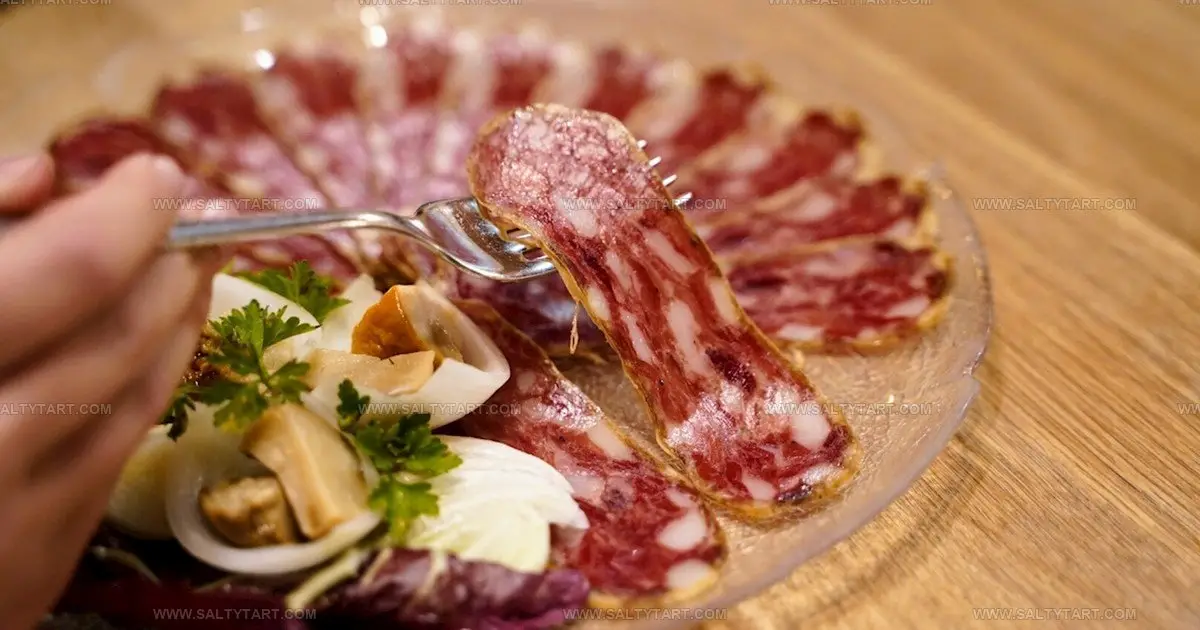

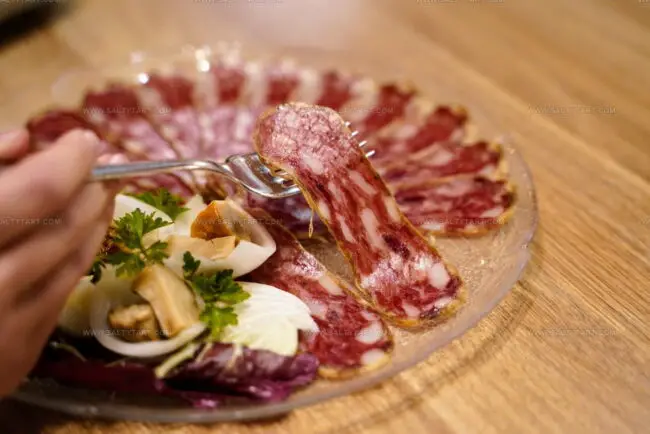

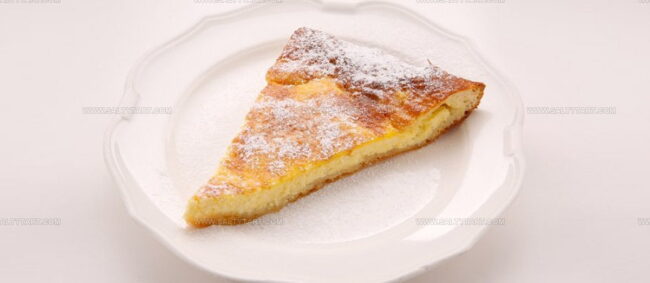
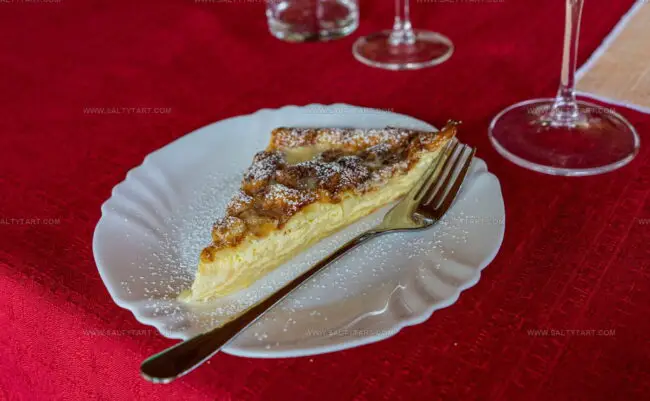
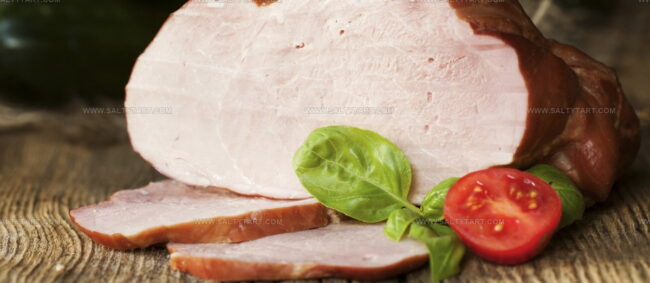
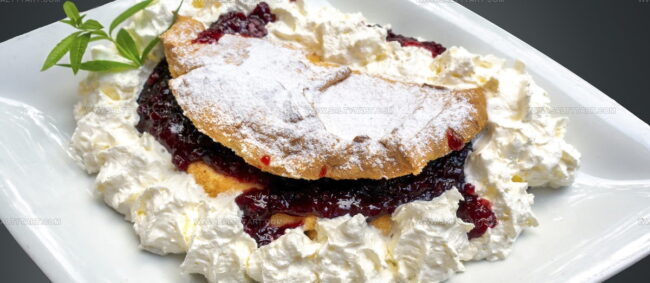

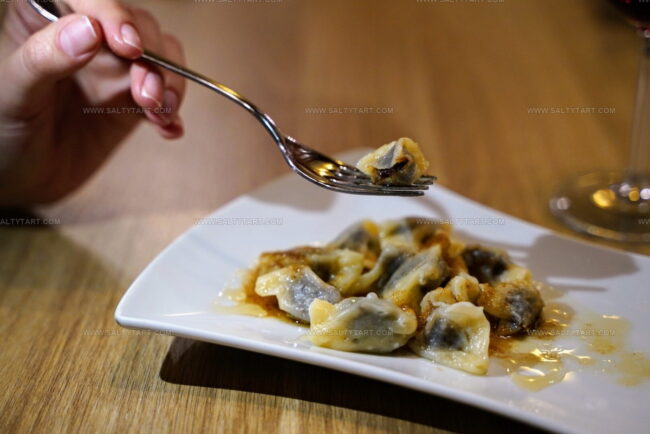

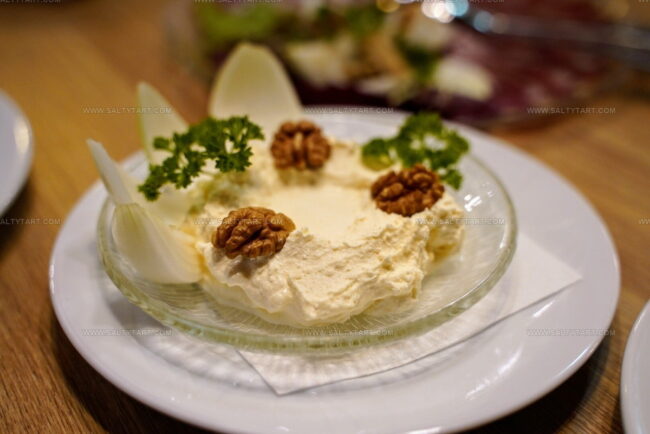
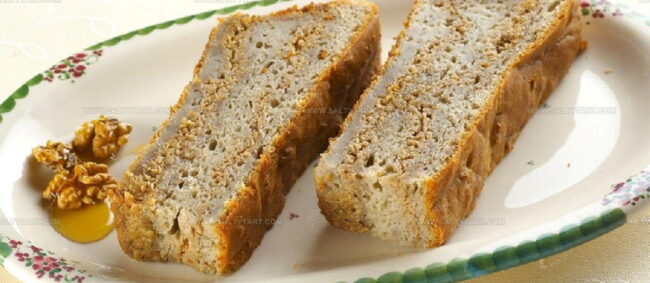
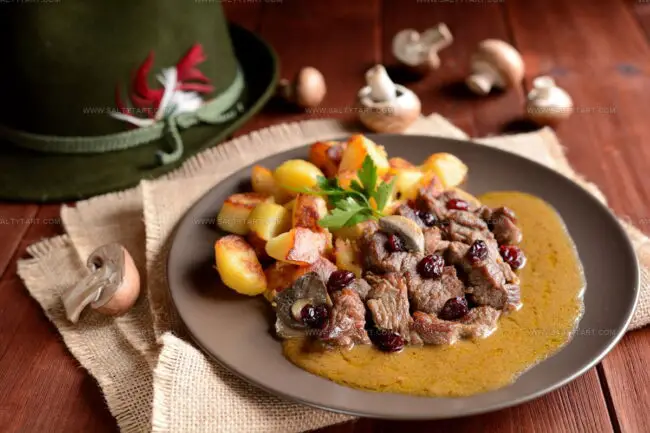
Jess Martinez
Contributing Recipe Writer & Nutrition Consultant
Expertise
Southwestern and Latin American cooking, Nutritional analysis and healthy recipe planning, Cultural food traditions, Modifying traditional dishes for better health
Education
Santa Fe Community College
Certificate in Culinary Arts
Focused on mastering the flavors and cooking methods of traditional Southwestern cuisine.
Jess’s love for bold, homegrown flavors led her straight into the world of Southwestern cooking and cultural nutrition.
After completing her Certificate in Culinary Arts at Santa Fe Community College, she made it her mission to show that good-for-you food can still taste incredible.
At saltytart.com, Jess shares vibrant, health-conscious recipes with roots in tradition but a fresh, modern twist. When she’s not testing new recipes, you’ll find her at local growers’ markets, tending her herb garden, or digging into food history books.